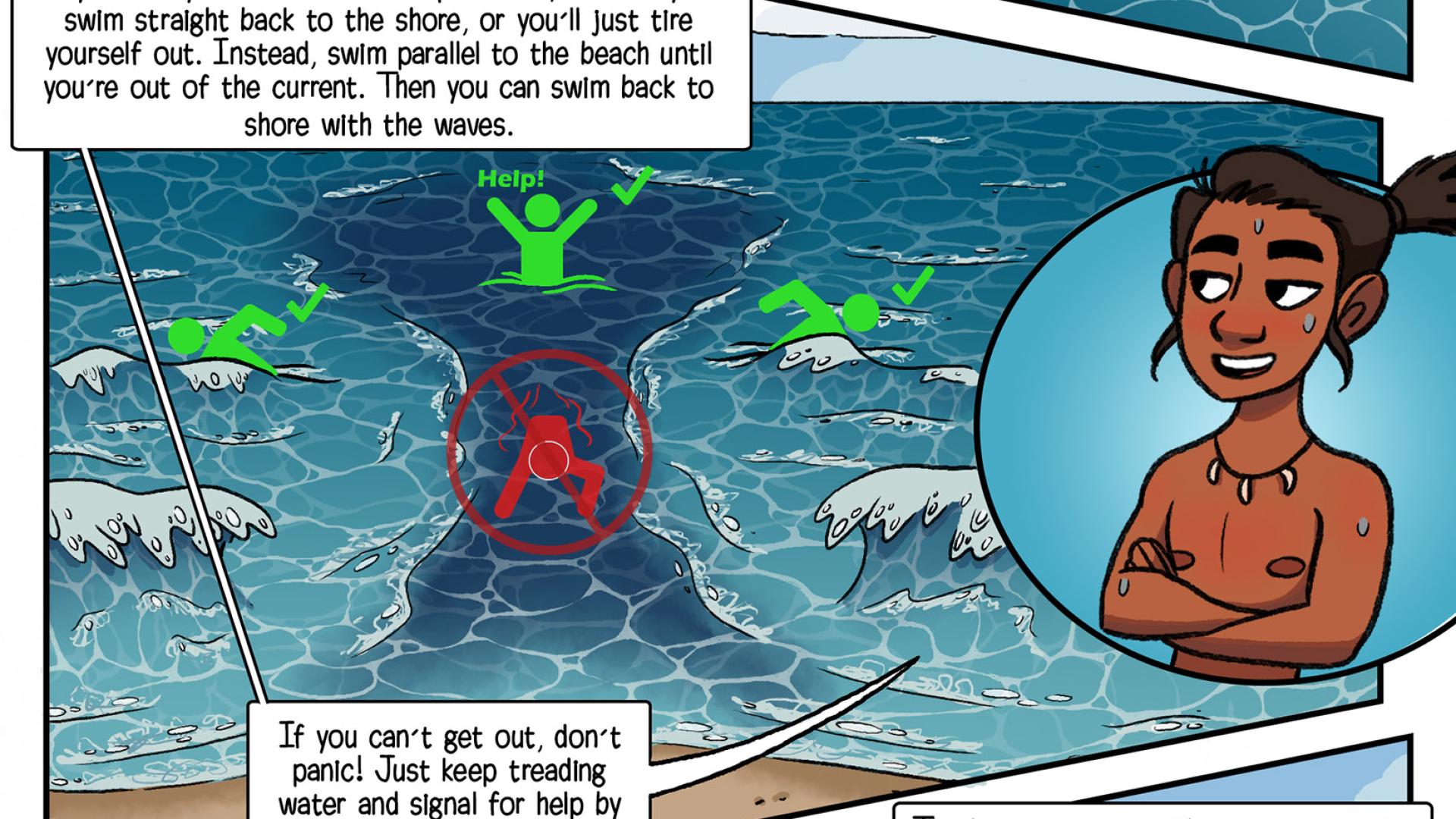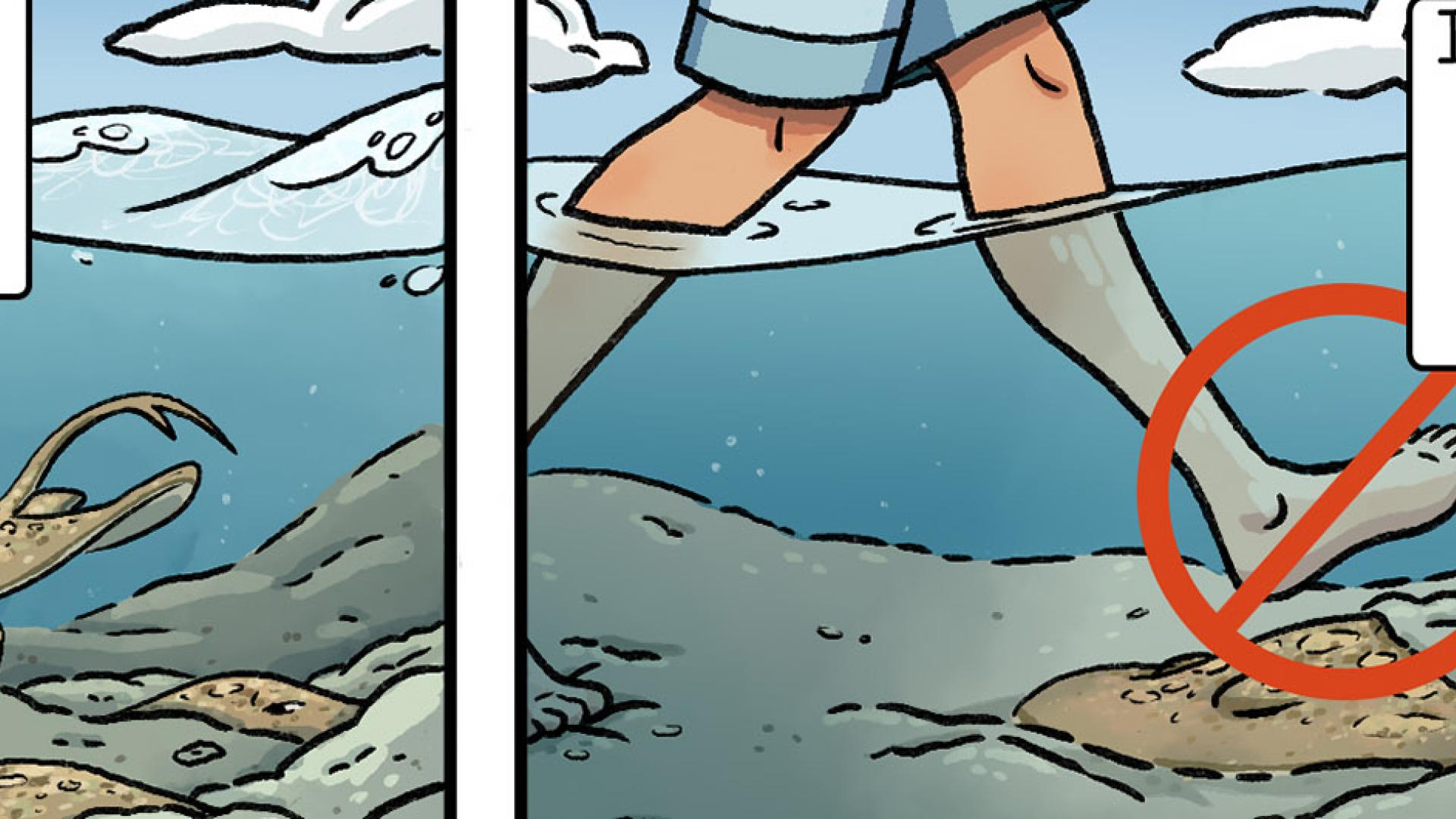Comic book gives kids insight to beach safety

Dr. Chris Lowe and his research team is banking on a soon-to-be released comic book to entice young children to learn more about marine animals and the beach environment. The director of the campus’ Shark Lab said it’s an easy way to educate kids without their eyes glazing over.
The comic books initially will be distributed to junior lifeguards at local beaches, and will be available (while supplies last) at Sharks @ The Beach event Saturday from 1 p.m. to 5 p.m.
“The thing about comic books is that kids read them not to be educated. They are savvy readers when it comes to that,” Lowe said. “So, it has to be couched in a good story and it has to be fun for kids. It has to be things that they can relate to from a human interaction standpoint, but hidden in there are the vegetables that go along with the dessert.
“This will lure them into wanting to read it and hopefully absorb some of the information without feeling that they are being taught.”
The comic book focuses on the character, Nick, and his first experiences at the beach. He quickly learns about rip tides, stingray shuffles, the difference between the dorsal fin of a shark and dolphin, and what to do if you encounter marine animals. The book, illustrated by alumnae Audrey Hopkins, who graduated last year with a Bachelor of Fine Arts degree in Illustration/Animation, is geared for kids ages 9-12.
The comic book is flooded with QR reader codes linked to websites designed to enrich the comic book experience. It also is packed with games testing a reader’s knowledge of marine life and animal facts.
“(Our intent) is to take the best available science and what we have learned about these animals and get that information available to the public and targeting certain audiences,” Lowe said. “So, obviously this is for kids who go to the beach.
“But maybe there are kids who don’t go to the beach and are apprehensive about going into the water, and they read this comic book and say ‘Oh, I know something about these animals and if I encounter them, it’s a cool thing instead of a scary thing.’”








